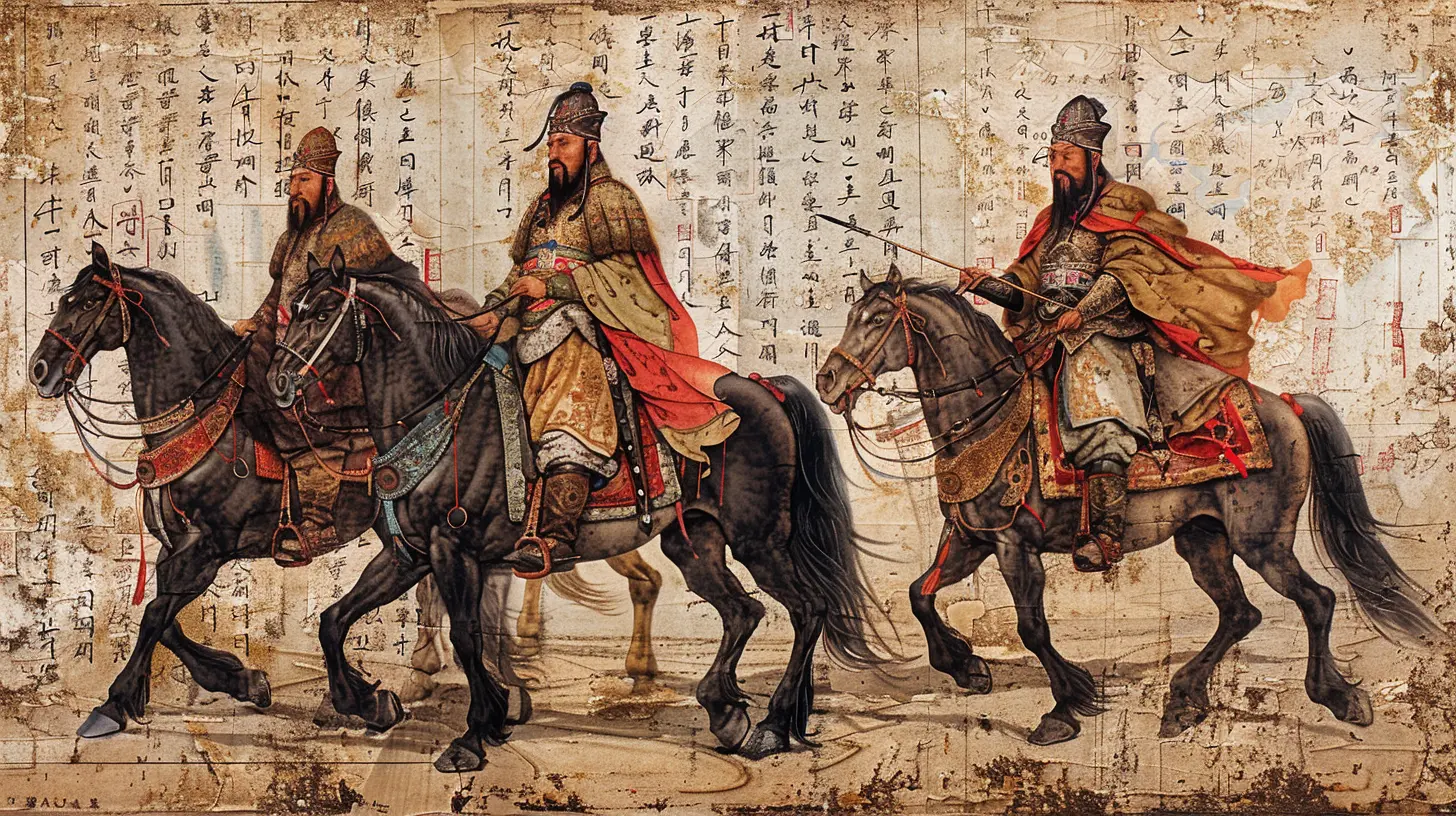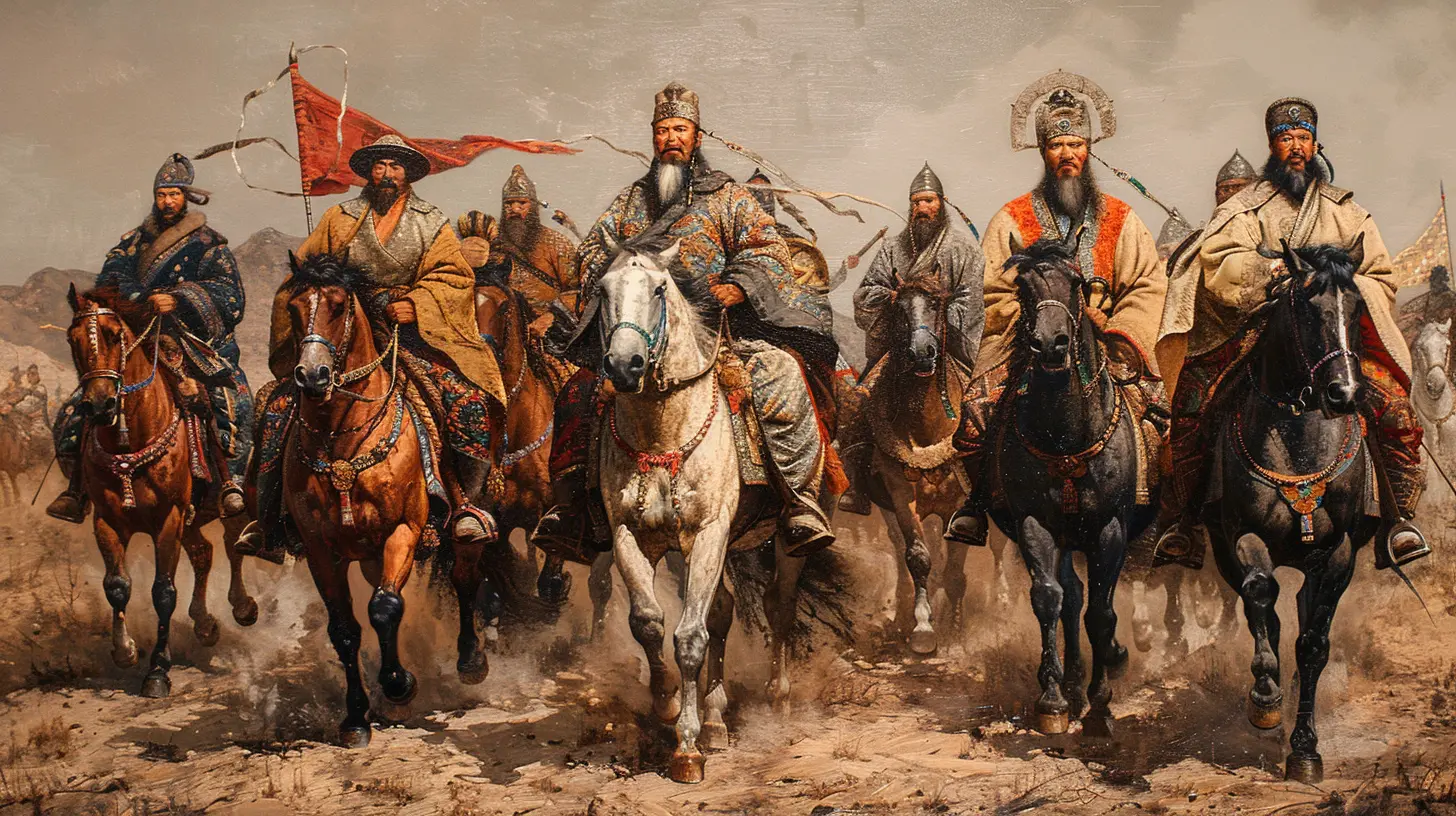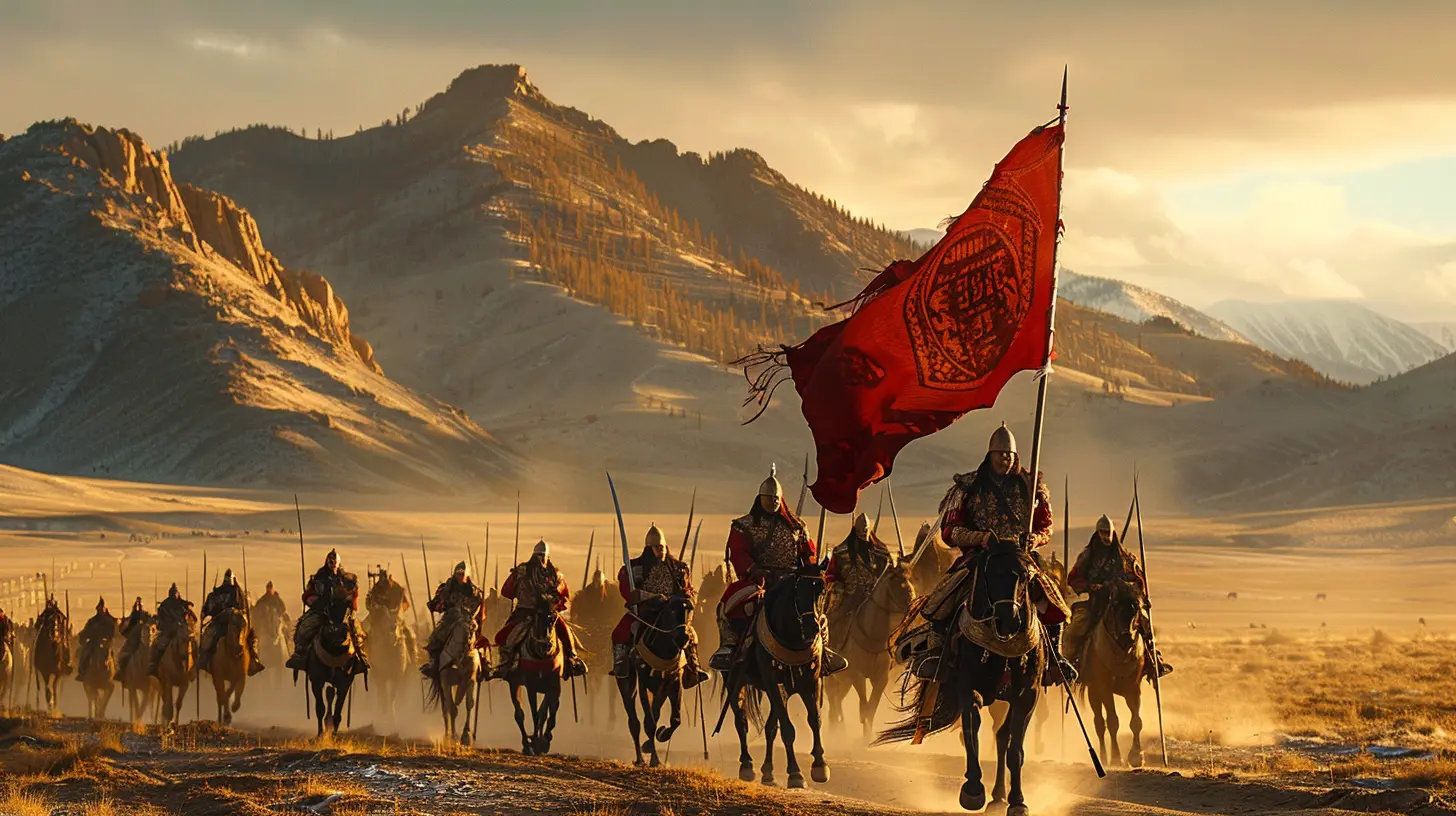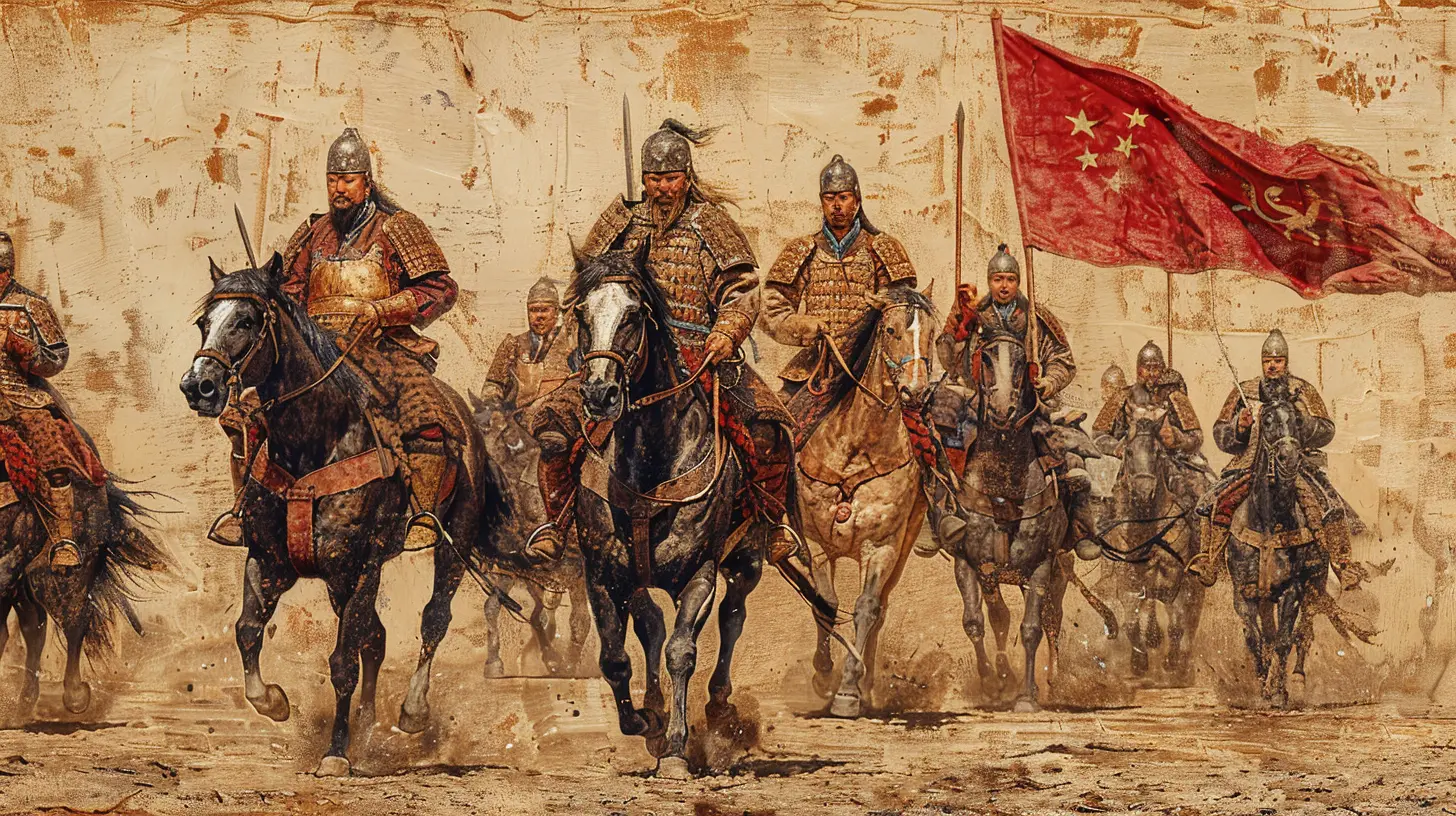The Legacy of the Mongol Empire
12 July 2025
When you hear the word "Mongol," what pops into your head? Maybe it’s the image of fierce horseback warriors thundering across the steppes. Or perhaps it's the name Genghis Khan, echoing like a legend through the ages. But the truth is, the Mongol Empire was far more than just conquests and swords. In fact, the legacy it left behind goes much deeper and wider than most people realize.
If history had a rock band, the Mongol Empire would be the breakout star—larger than life, groundbreaking, and still influencing the world centuries after its peak. So let’s saddle up and take a ride through the fascinating legacy of the Mongol Empire.
Who Were the Mongols, Really?
Before we dive into their legacy, let’s get a feel for who the Mongols actually were.The Mongols originated from the vast, rugged steppes of Central Asia—mostly modern-day Mongolia. They were nomads who relied on their horses for just about everything. Think of them as the ultimate road warriors, centuries before motorcycles were a thing.
In 1206, a man named Temujin united the scattered Mongol tribes. He later took the name Genghis Khan, which literally means “universal ruler.” And spoiler alert: he totally lived up to the name.
Under his leadership, and later under the rule of his descendants, the Mongol Empire became the largest contiguous land empire in history. At its peak, it stretched from Eastern Europe to the coasts of China. That’s around 22% of the Earth’s landmass! Insane, right?
Unifying the East and West
One of the most game-changing aspects of the Mongol Empire was how it connected the East and the West like never before. Imagine a bridge built with warriors and diplomacy—because that’s what the Mongols created.Before the Mongol era, trading between Asia and Europe was dangerous and unreliable. But when the Mongols took over vast swaths of land, they established what historians call the “Pax Mongolica” (Mongol Peace). Under this peaceful period, the Silk Road thrived, and goods, ideas, technologies, and even diseases (hello, Black Death) moved between continents for the first time on a large scale.
They encouraged merchants, protected caravans, and even standardized weights and measures to make trade smoother. This was globalism, medieval style.
Innovation on Horseback
Let’s be real—conquering land is one thing. But keeping it all under control? That's a whole other beast. The Mongols weren’t just warrior brutes; they were strategic geniuses.Here’s what made their governance so effective:
1. Merit Over Bloodline
Unlike many other empires of the time, the Mongols valued skill over noble birth. If you were smart, loyal, and could get things done, you were promoted—no matter your background. That’s pretty progressive for the 13th century, don’t you think?2. Religious Tolerance
In a time when religious persecution was pretty much the norm, the Mongols allowed people to practice their faith freely. Whether you were Buddhist, Muslim, Christian, or Shamanist, you were welcome in the Mongol Empire. And this wasn't just some PR stunt; it helped maintain peace and cooperation in a very diverse empire.3. Efficient Communication
They created a postal relay system, known as the Yam, which allowed messages to travel lightning-fast across the empire. Riders on horseback would carry messages from one post station to another, covering hundreds of miles in days. It was like the Amazon Prime of the medieval world.
Cultural Melting Pot
One of the most fascinating parts of the Mongol legacy is how their empire became a cultural melting pot. Empires usually impose their own culture wherever they go. The Mongols, though? They absorbed and adapted.They borrowed administrative techniques from the Chinese, military tactics from the Persians, and economic policies from the Turks. Their courts were multilingual, multicultural, and even multi-religious.
And because they moved so many people—scholars, artisans, engineers, and even entire communities—across the empire, they basically turned their territory into a giant cultural blender.
Crazy thought: Without the Mongols, Marco Polo might have never made it to China. And we might not even know about paper money or gunpowder in the West when we did.
Shaping Modern Borders
You know that game where one move sets off a ripple effect? That’s the Mongol Empire for you.After Genghis Khan, the empire eventually split into four major khanates—each ruled by different branches of his family. These divisions unknowingly laid the groundwork for many of today’s modern nations.
For example:
- The Yuan Dynasty in China, led by Kublai Khan (Genghis Khan’s grandson), shaped Chinese political systems for centuries.
- The Golden Horde in Russia impacted everything from language to military structure.
- The Ilkhanate in Persia helped revive Persian art and culture.
- The Chagatai Khanate influenced Central Asian identity and Islamic practice.
So, whether we realize it or not, the lines the Mongols drew are still visible on today’s political maps.
The Dark Side of Empire
Okay, let’s not sugarcoat it—Mongol conquests were brutal. Cities were razed, populations were wiped out, and their methods could be downright terrifying.But here’s the paradox: those very conquests also led to trade, innovation, exchange, and cultural bloating the world had never seen. They centralized power, introduced codified laws (like the Yassa), and helped make the world more interconnected.
It’s complicated, right? The Mongol legacy isn’t just black or white—it’s a giant, swirling gray area. But isn’t that what makes history so intriguing?
Lessons We Can Still Learn Today
Fast forward 800 years, and the echoes of the Mongol Empire are still here.Let’s break down a few lessons we can take from their incredible story:
- Unity is strength: Genghis Khan turned warring tribes into a well-oiled machine. When we work together, we can accomplish massive things.
- Diversity drives progress: The Mongols thrived because they welcomed different cultures, beliefs, and innovations.
- Adaptability wins: Whether on the battlefield or in the palace, the Mongols succeeded because they learned from everyone—and adapted quickly.
- Communication is power: Their yam system showed how vital fast, reliable communication is—something we still strive for today.
The Mongol Influence on Language and Ideas
Did you know that even modern languages carry traces of Mongol influence? From Turkish to Russian, Persian to Chinese, vocabulary and phrases have been borrowed and blended thanks to the movement of Mongol people and culture.Also, the Mongols were one of the first to push for a global system—not just politically, but intellectually. They helped merge Indian numerals with Arabic systems, and even influenced European cartography. Imagine early Google Maps with a Mongol twist.
Legacy in Art and Architecture
If you've ever admired Persian miniatures or Mongolian script, guess what? That’s part of the Mongol legacy too.They commissioned grand mosques, palaces, and forms of art that merged Chinese, Persian, and Turkic styles. It’s like that cool fusion dish at your favorite restaurant—unexpected, yet amazing.
In fact, many art historians argue that Mongol influence led to a sort of early art renaissance in the Islamic world. And we’re not just talking pretty pictures—we mean innovations in science, literature, and philosophy as well.
Wrapping It All Up
So, what is the legacy of the Mongol Empire? It’s vast, messy, complicated—and totally fascinating. From warhorses and arrows to diplomacy and postal systems, the Mongols didn’t just change the world—they redrew its map, rewrote its rules, and redefined what an empire could be.Sure, they were fierce warriors. But they were also masterful administrators, cultural connectors, and agents of global change. Their story reminds us that history isn’t just about battles and bloodshed—it’s also about bridges and brains.
Whether you’re a history buff, a curious student, or just someone who likes a good story — the tale of the Mongol Empire is one worth remembering. Because in so many ways, we're still living in its shadow.
all images in this post were generated using AI tools
Category:
History LessonsAuthor:

Zoe McKay
Discussion
rate this article
1 comments
Nico McGrady
This article beautifully captures the profound impact of the Mongol Empire on culture and history. It's a reminder of how legacies shape our world today. Thank you!
August 3, 2025 at 3:41 AM

Zoe McKay
Thank you for your kind words! I'm glad you found the article insightful. The Mongol Empire's legacy truly continues to influence our world today.


